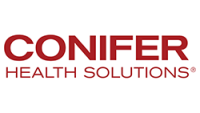Bridging the gap: Integrating value-based care into revenue cycle management
The idea of value-based care (VBC) has existed for decades but only gained momentum since the 2017 implementation of the Merit-based Incentive Payment System (MIPS) and the Quality Payment Program (QPP). VBC incentivizes providers for quality outcomes, unlike fee-for-service models that reimburse providers for each service performed. The ultimate goal of VBC is to improve outcomes, lower costs, reduce fragmentation and provide a more holistic healthcare experience for patients.
The 2022 Alternative Payment Model (APM) measurement survey conducted by AHIP and the Blue Cross Blue Shield Association found that 86.7% of Americans are cared for through VBC arrangements, up from 77% in 2021.
While VBC’s tenets are clear and hard to argue with, the road to its adoption has been rocky. One reason is that it doesn’t neatly align with traditional revenue cycle processes, which were designed around fee-for-service models. Providers trying to hold on to outdated revenue cycle processes while working within VBC models can expect significant operational challenges and revenue implications.
It’s all about the metrics
An article by McKinsey & Co. says, “VBC arrangements, when designed and implemented well, can have a significant positive impact on earnings before interest, (taxes), depreciation and Amortization (EBI(T)DA)—and deliver other benefits as well.” The article suggests EBI(T)DA improvements can reach “at least 20% and sometimes up to 50% in low-margin systems.”
To achieve optimal reimbursement and top incentives under VBC, providers must pay particular attention to VBC formulas and metrics. In addition, they need data analytics that can help identify opportunities for improvement in care delivery. Since much of this data is generated in the electronic health record and revenue cycle workflows, accuracy in processes like documentation, coding and billing is paramount.
Coding compliance
One of the challenges of tracking and reporting quality and performance metrics as part of VBC arrangements is that each payer has its own unique requirements—requirements that change often—and providers work with hundreds of different payers. Between March 2020 and March 2022, there were more than 100,000 payer requirement changes.
Staying on top of these changes is an arduous undertaking, which is why maintaining coding compliance can be so challenging.
Coding noncompliance accounts for an estimated $36 billion in annual lost revenue, denials and fines. Because it falls under the “fraud and abuse” category of the American Medical Association’s Principles of CPT Coding, coding compliance is an area that is highly scrutinized by payers and subject to increasingly stringent government regulations. In 2019 alone, the CMS and the HHS Office of Inspector General imposed fines and penalties for coding noncompliance of $2.5 billion and $3.7 billion, respectively.
One of the most impactful steps organizations can take to improve coding compliance to support VBC efforts is implementing a comprehensive education program for the billing team. Ongoing, rigorous education and industry certification are essential for maintaining an optimal level of coding knowledge for both new and more experienced coders. It may also be helpful to assign certain team members to manage a specific payer or group of payers. This can help them acquire the deep knowledge necessary to understand and stay abreast of changing requirements for those payers.
Implementing internal coding audits can also help by identifying problematic trends so they can be proactively addressed. Billing teams should collaborate with the organization’s chief compliance officer to monitor compliance. As part of this effort, they should establish processes for self-disclosures, cooperation and remedial actions.
Technologies like AI and robotic process automation (RPA) are invaluable tools for enhancing coding accuracy and VBC reporting. From clinical documentation to coding analytics, these technologies can automate highly manual, error-prone processes with limited human intervention. Once a human becomes involved, much of the work to investigate and identify coding and documentation issues has already been completed.
Capturing data
Data analytics enable providers to continuously monitor their performance against key VBC quality, cost and performance metrics. It is also vital to gain actionable insights needed for timely interventions, enhance patient care and achieve operational efficiency. This requires organizations to engage with data in new and powerful ways.
The challenge is that this data typically resides in multiple locations and systems, including the electronic health record, claims, clinical registries and patient surveys. Capturing and analyzing this data requires sophisticated revenue cycle technology and a level of expertise necessary to manage that technology. This is critical for creating a single source of truth to support quality and performance reporting and to deliver actionable insights to fuel VBC strategies.
Healthcare organizations collect multi-terabytes of clinical, claims, environmental and social data on individual patients. These massive, complex and highly detailed data sets are vital to VBC reporting, but they aren’t useful until grouped into meaningful units of analysis.
Taking a strategic approach to revenue cycle management in a VBC environment
Value-based care can help move the American healthcare system from a costly sick-care model to a more holistic data-driven model focused on outcomes. In an article about VBC, McKinsey & Co. suggests that “Given the value at stake — and potential risks — health system executives should carefully consider the pace and path they want to take, which should vary depending on their organizations’ capabilities and local market conditions.”
By embracing change and investing in technology that supports automated revenue cycle processes and advanced data analytics, providers will be better able to manage the intersection of VBC and revenue cycle management. For those struggling with staffing shortages or lacking resources to purchase and implement new technologies, partnering with revenue cycle experts can help. These partners bring with them the tools, teams, technology and expertise needed so providers can achieve their VBC goals faster and with less financial risk.






